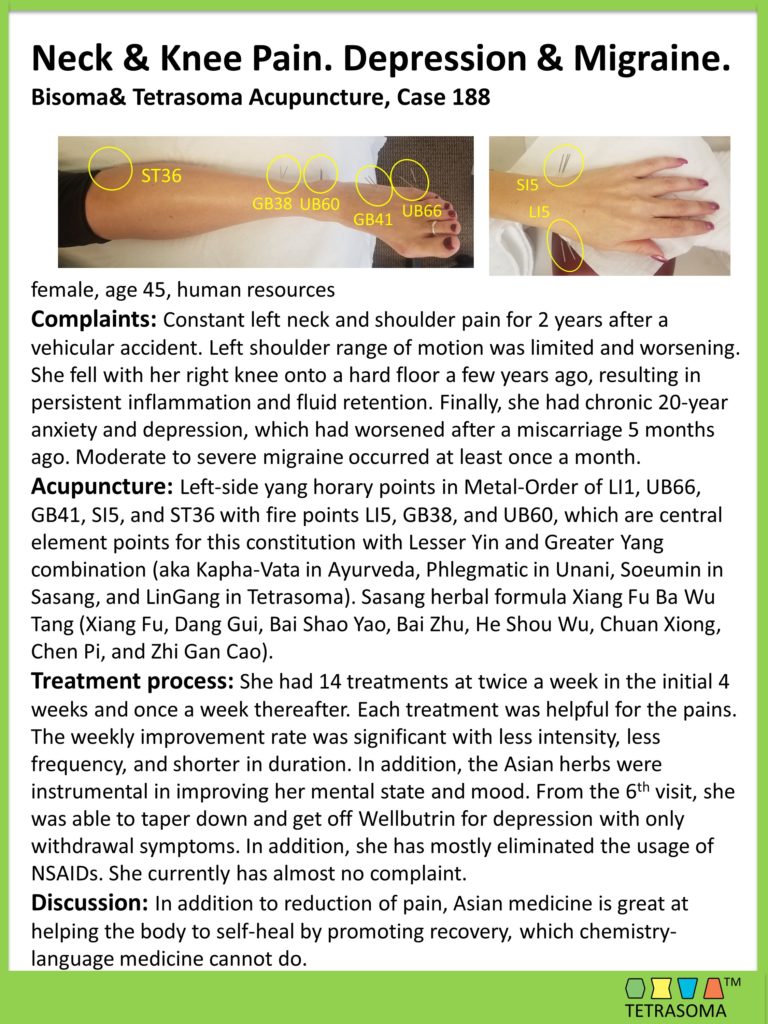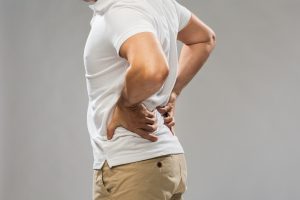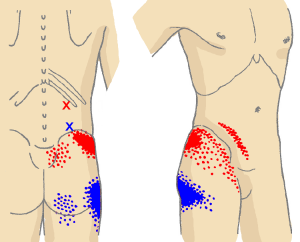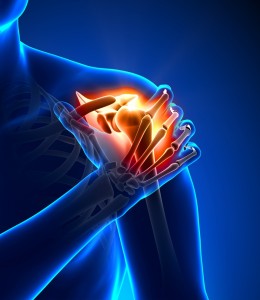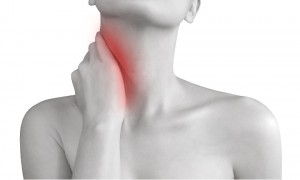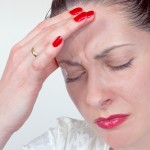-
 David Lee Acupuncture Clinic166 N. Moorpark Rd.
David Lee Acupuncture Clinic166 N. Moorpark Rd.
Suite # 201
Thousand Oaks, CA 91360805-497-6200 Clinic Hours
Monday8:00am - 6:00pmTuesday8:00am - 6:00pmWednesday8:00am - 6:00pmThursday8:00am - 6:00pmFriday8:00am - 6:00pmSaturday9:00am - 1:30pm
-
Chinese Medicine
Neck & Knee Pain, Depression, and Migraine. #188
Neck & Knee Pain. Depression & Migraine.
Bisoma& Tetrasoma Acupuncture, Case 188
female, age 45, human resources
Complaints: Constant left neck and shoulder pain for 2 years after a vehicular accident. Left shoulder range of motion was limited and worsening. She fell with her right knee onto a hard floor a few years ago, resulting in persistent inflammation and fluid retention. Finally, she had chronic 20-year anxiety and depression, which had worsened after a miscarriage 5 months ago. Moderate to severe migraine occurred at least once a month.
Acupuncture: Left-side yang horary points in Metal-Order of LI1, UB66, GB41, SI5, and ST36 with fire points LI5, GB38, and UB60, which are central element points for this constitution with Lesser Yin and Greater Yang combination (aka Kapha-Vata in Ayurveda, Phlegmatic in Unani, Soeumin in Sasang, and LinGang in Tetrasoma). Sasang herbal formula Xiang Fu Ba Wu Tang (Xiang Fu, Dang Gui, Bai Shao Yao, Bai Zhu, He Shou Wu, Chuan Xiong, Chen Pi, and Zhi Gan Cao).
Treatment process: She had 14 treatments at twice a week in the initial 4 weeks and once a week thereafter. Each treatment was helpful for the pains. The weekly improvement rate was significant with less intensity, less frequency, and shorter in duration. In addition, the Asian herbs were instrumental in improving her mental state and mood. From the 6th visit, she was able to taper down and get off Wellbutrin for depression with only withdrawal symptoms. In addition, she has mostly eliminated the usage of NSAIDs. She currently has almost no complaint.
Discussion: In addition to reduction of pain, Asian medicine is great at helping the body to self-heal by promoting recovery, which chemistry-language medicine cannot do.
Dr. Lee’s Case Study #31: Back Pain
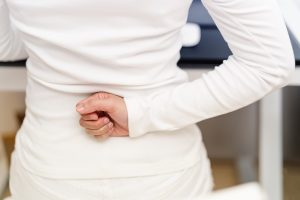
Patient: Female, age 32
Complaint: Back pain. Since 5 years ago, the patient was experiencing progressive pain in the upper, middle, and low back. The pain was intensifying and becoming constant. MRI shows minor arthritis in the spine indicating that most of the pain is from musculo-tendino tension and knots.
Treatment Process: The patient had a total of 6 acupuncture sessions. In the first two weeks, the patient came in twice and once a week thereafter. From the first treatment, the patient noticed progressive relief. However, the patient was advised to rest every hour at work, which was an intensive physical labor all day with only 30 minute break for lunch.
Discussion: Although acupuncture may be helpful, acupuncture treatments cannot be used as a crutch because the body can only take up to what it is built to withstand and recover. Since she is young, a full recovery is expected. But it is not a good idea to push the body over the limit where the problem cannot be resolved and quality of life is affected.
Disclaimer: Acupuncture results may vary since each individual case is different.
Dr. Lee’s Case Study #29: Menopause and Spasms
Patient: Female, age 51, artist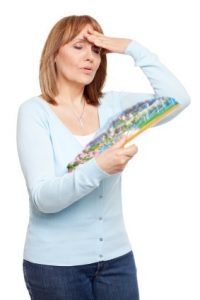
Complaints: Menopausal symptoms and spasms in the left side of body. Since the full hysterectomy 3 months ago, after removal of fibroid cysts of 2.5 pounds, she developed unpleasant psychological and physical symptoms. She bursts into tears just with the thought of her child. She has not undergone a hormone replacement therapy. Hot flashes are four times during the day. She wakes up every morning at 6am with a hot flash and mild dampness on skin. She has a gurgling/fluttering sensation in the upper left chest. She has painful muscle contraction in the left arm and left leg.
Treatment process: After the first treatment, the uncontrollable tearing of the eyes immediately ceased. On the second visit, the patient reported no more tearing. The left side chest gurgling, arm pain, leg pains were less by 50%. After 7 acupuncture sessions in 4 weeks, the patient reported overall improvement of 90%.
Discussion: Acupuncture treats subjective and undiagnosed conditions even when the patient’s reports are difficult to objectively verify.
Disclaimer: Acupuncture results may vary since each individual case is different.
Dr. Lee’s Case Study #28: Low Back Pain and Sciatica
Patient: Male, age 56, civil engineer
Complaints: The patient had chronic low back pain and constant nerve pain down the left leg. He had 3 epidurals and surgery without significant relief.
Treatment Process: Within the first couple of months of treatment at twice per week five years ago, most of the pain was eliminated. Thereafter, he comes in for acupuncture treatment every one or two months when he notices tightness in the left calf.
Discussion: Post-surgical acupuncture is very helpful after removing structural impingement on the sciatic nerve.
Disclaimer: Acupuncture results may vary since each individual case is different.
Dr. Lee’s Case Study #27: Foot and Pelvic Pain
Complaints: As an avid athlete and trainer, she broke her right pelvis and right foot on two separate occasions. There was also tearing of the right upper leg sartorius and rectus femoris muscles 4 years ago.
Treatment process: The patient came in twice a week for acupuncture treatments. The patient left for an international trip after 4 treatments within a 10-day period. On the 4th visit, the patient reported no pain in the leg and foot even with long airplane flights and much walking. But as soon as she arrived back home, she developed a pelvic floor inflammation. Same acupuncture treatments on the 5th and 6th visits did not relieve the pain but worsened. But the leg and foot pain were still better. On the 7th visit, a different acupuncture point combination was administered. Within 30 minutes, the patient noticed a significant reduction of 50% of pain.
Discussion: It is important to keep an open mind to other options that may have even better result. We should not be satisfied by the initial relief alone. An assessment of its efficacy over time should be observed to ensure the most optimal treatment.
Disclaimer: Acupuncture results may vary since each individual case is different.
Dr. Lee’s Case Study #26: Shoulder Adhesive Capsulitis
Complaints: Adhesive capsulitis in the right shoulder. The pain began 2½ months ago. She cannot sleep on her right side. Therapy helped to increase the range of motion but the pain was persistent.
Treatment Process: There was no significant improvement with the first two visits although some pain was temporarily relieved. Since the third visit, using a different acupuncture point combination, the patient began to notice dramatic improvement in intensity, frequency, and duration. The recovery was clearly noticeable on a weekly basis. The patient was able to sleep on her right side after the third visit.
Discussion: She is an artist by trade, using her arms most of the day. Without interrupting her daily work schedule with rest, her pain gradually lessened and the range of motion further increased.
Disclaimer: Acupuncture results may vary since each individual case is different.
Dr. Lee’s Case Study #25: Cervicalgia with Radiculitis
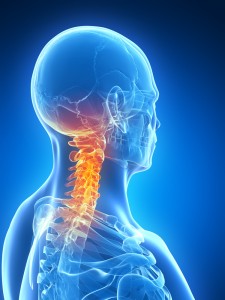 Patient: Female, age 65, retired
Patient: Female, age 65, retired
Complaints: X-ray showed bone spurs impinging on a nerve at cervical vertebrae C6 causing neck stiffness and radiating nerve pain down the left arm into the hand. The symptoms began 5 months ago after waking up with a stiff neck. Prescriptions, over-the-counter medications and therapy temporarily helped but the symptoms were increasingly persistent and frequent.
Treatment Process: The patient came in twice a week for acupuncture treatment. On the second visit, three days later, the patient reported immediate and significant reduction of left arm nerve pain. The improved state was maintained but the pain had significantly increased after the third visit. A different acupuncture point combination was administered. The patient had incremental and consistent improvement in the next 6 visits with 97% improvement overall in frequency, duration, and intensity of the symptoms.
Discussion: Some patients notice significant improvement compared to prescription medications even with less optimal acupuncture points. It is a healthcare provider’s job to continually look for better treatments, especially when the pain comes back prematurely. In this case, the second option was better than the first, allowing the patient to achieve a level of improvement where she can complete her normal daily activities.
Disclaimer: Acupuncture results may vary since each individual case is different.
Dr. Lee’s Case Study #23: Cervical Herniated Discs
Complaints: Cervical herniated discs at C5-T1 with nerve impingement causing radiculitis down the left shoulder, arm, and hand. Much physical activity at home two months ago caused left side neck pain and nerve pain radiating down to left hand. The pain was so severe that it mimicked heart attack symptoms. MRI shows 3 minor herniated discs. There is a recurrence of pins and needles in the left arm and hand at half hour intervals followed by brief numbness.
Treatment process: On the first day of treatment, the patient was given an acupuncture treatment and acupressure devices were placed on the same points. The patient was instructed to leave them on for at least 8 hours. On the second visit 3 days later, the patient reported less intensity and less frequency of sensation of pins and needles at 1-2 hour intervals. On the third visit, another 3 days later, the patient reported even more reduction of intensity and frequency of pain. On the fourth visit, the patient reported an overall improvement by 50-60% in frequency, intensity, and duration.
Discussion: The patient came in for acupuncture treatments after trying the obvious medical routes. Acupuncture is a viable option in addition to many medical choices.
Disclaimer: Acupuncture results may vary since each individual case is different.
Dr. Lee’s Case Study #22: Headaches & Cervical Arthritis
Complaints: Constant, uninterrupted headache since 12 years ago. Most of the pain is in the occiput (back of the skull) and forehead. Forehead pain is more debilitating. She always wakes up in the mornings with headaches of increased intensity. Recent physical therapy relieved the headache from 7-8/10 down to 4-5/10 but it had crept back up to 6-7/10.
Treatment process: The patient comes in for acupuncture twice a week. The first visit temporarily relieved the headache but was significant enough to be encouraging. After the second visit, the patient began to notice less intensity of headaches in morning. By the sixth visit, the patient is noticing several mornings out of the week without forehead pain and less stiffness in the occiput.
Discussion: In acupuncture, the patient’s prior history and current status are often not relevant. Whether a headache is intractable, not properly diagnosed as a certain type, or had failed to get relief with conventional medical approaches, acupuncture often works very well. Acupuncture is successful because it affects the physiology in different ways.
Disclaimer: Acupuncture results may vary since each individual case is different.
